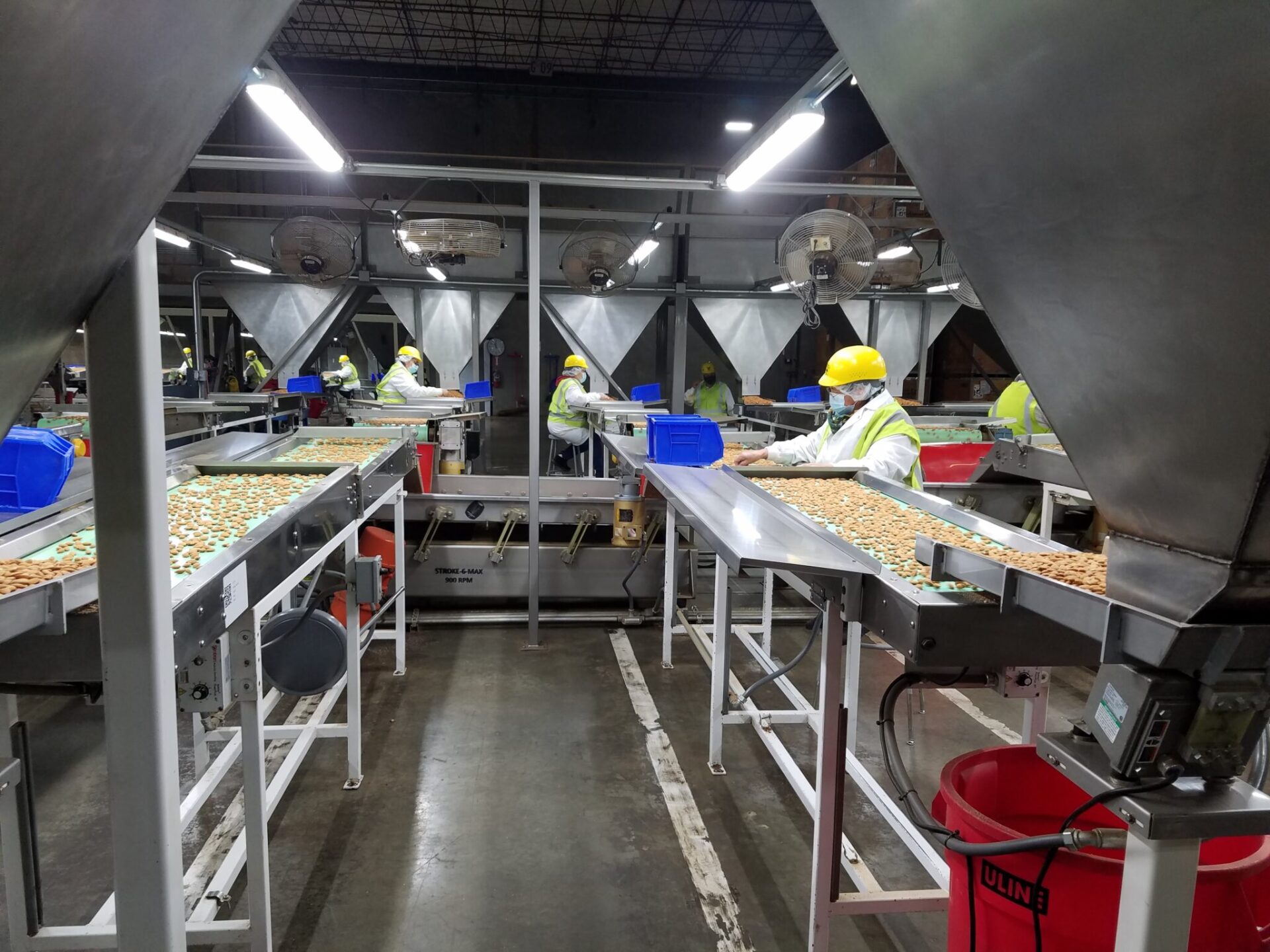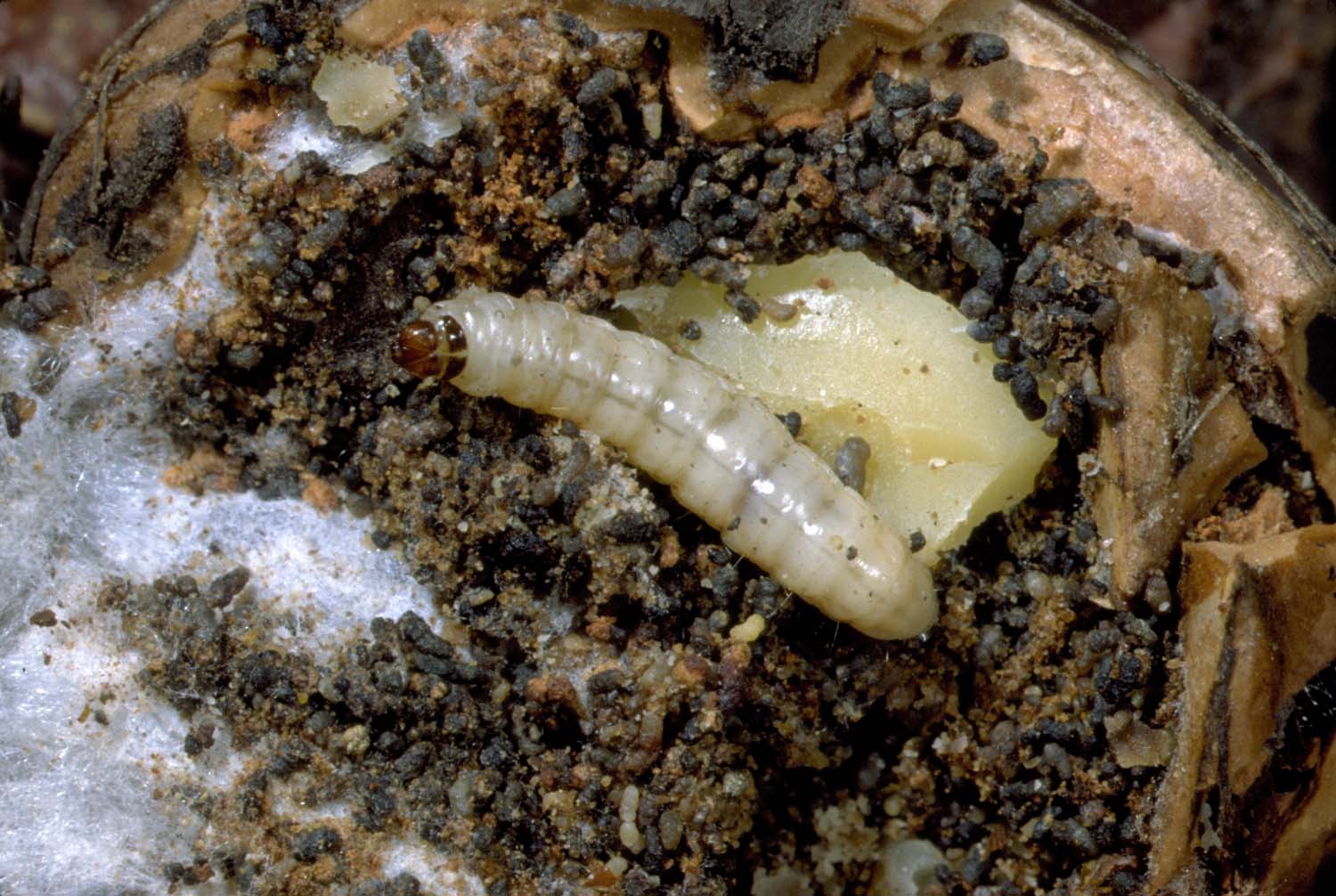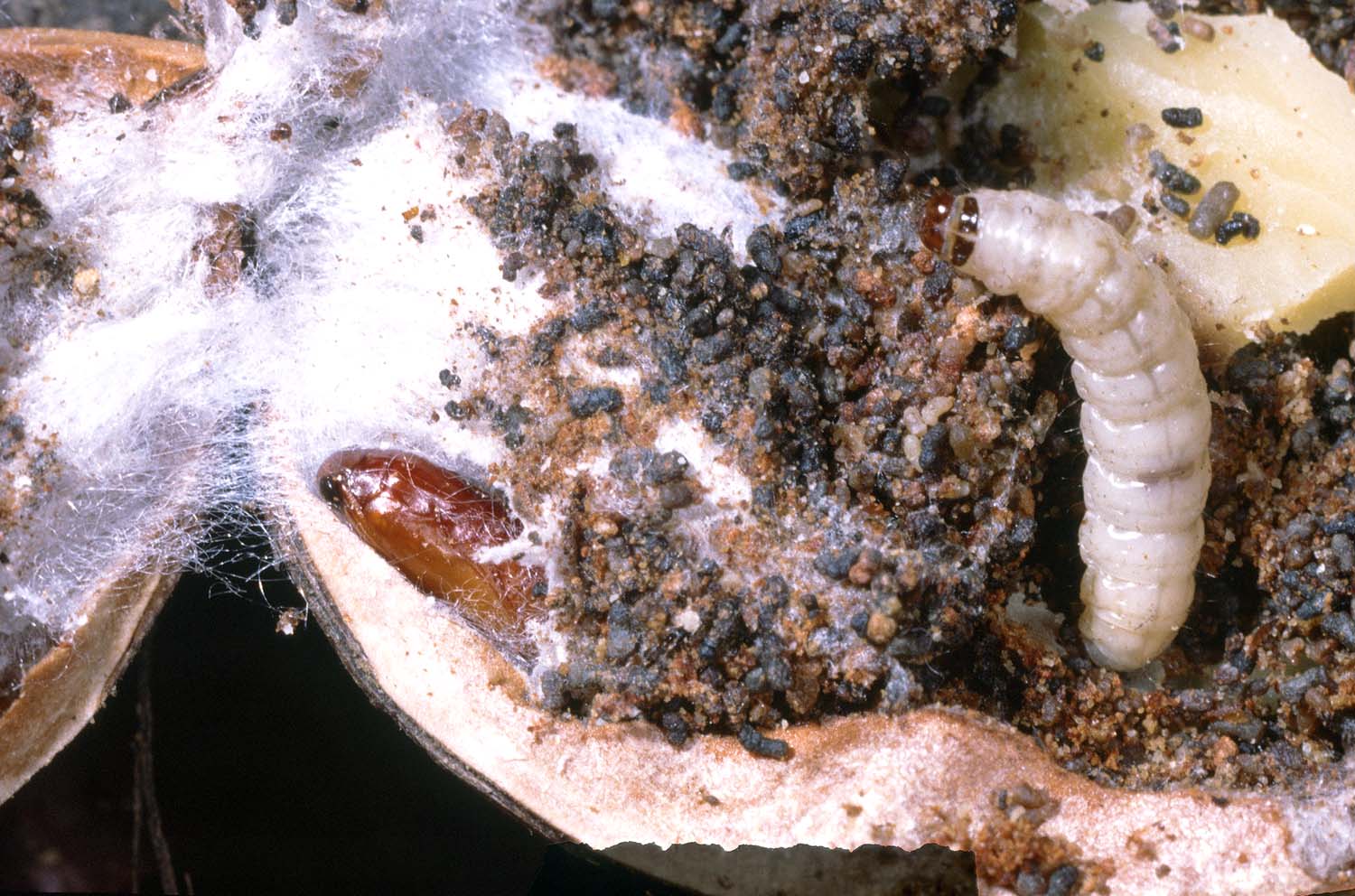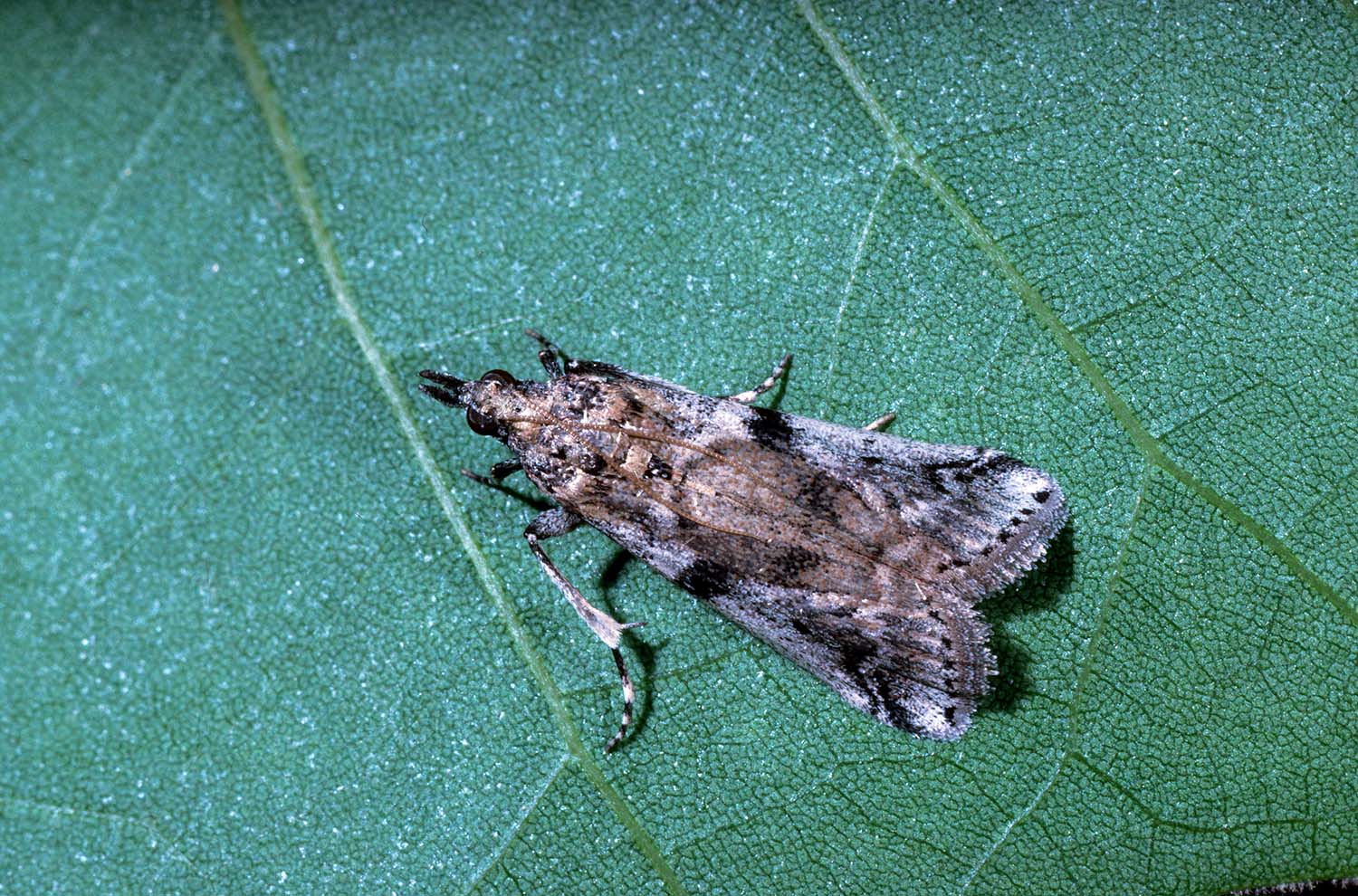
Low numbers of navel orangeworm (NOW) at the start of the growing season has been cited as one reason for a trend of lower NOW damage across most of the tree nut sector this year. This is good news considering the complexity of having many more acres of nut trees coming into production across the state and different types of nuts planted in close proximity along with different management styles, including pest control, across all orchards.
Damage Levels
Navel orangeworm, Amyelois transitella, has emerged as the primary moth pest in California nut crops. Without control, successive generations grow larger over the summer and fall, infesting vulnerable nuts. NOW feeding on kernels causes rejection by processors and loss of crop yield and value. NOW feeding also predisposes nuts to contamination by fungal organisms that produce aflatoxins.
USDA-ARS research entomologist Joel Siegel said several factors came into play to lower damage levels in this year’s almond and pistachio crops. In almonds, there was low NOW pressure when Nonpareil hull split began, leaving them relatively unscathed.
“This issue was with the pollinators,” Siegel said.
NOW pressure did build toward the end of the season and that is where the majority of the damage was sustained. The increase, however, was much less than in past years.
In pistachios, Siegel said hull integrity was good at harvest and kept NOW damage levels lower. Hull split was also delayed, keeping NOW out until just before harvest.
High damage years occur, Siegel said, when hullsplit is earlier and later flights of NOW are larger.

Growers are Learning
More growers are adopting orchard sanitation practices, but as Bob Klein, manager of the California Pistachio Research Board, noted, “It really does matter what your neighbor is doing.”
Those growers and managers committed to orchard sanitation in almonds are doing a better job of it, Klein said, but NOW can migrate from orchards where populations have built due to lack of sanitation. Over time, good sanitation will lower resident populations of NOW, and that means fewer of these damaging pests will move into nearby pistachio orchards once the almond harvest is completed.
This year also marks an unprecedented third year in row of low NOW damage in pistachio nuts, Klein reported.
“We’ve never had three years in a row with low damage, so this was not expected,” Klein said. “Growers didn’t appear to back off with NOW control after two years of low damage.”
There was a bit of an increase in NOW with the second shake, but high quality in the first shake, Klein said. Pistachio growers are incentivized with premiums for lower damage levels and are looking at first shakes to secure that higher price, he said.
Mel Machado, vice president of member relations for Blue Diamond Growers, said total reject levels in almonds are down, but that makes sense with 2020’s much larger almond harvest.
As of the last week of November, Machado said that damage was averaging 1%, but that many stockpiles of nuts remain to be processed. Nonpareils are at 1% damage compared to 1.4% in 2019. About 12% of nuts failed to qualify for High Quality Premium designation, compared to 19% in 2019.

Not All was Saved
Nuts that were harvested later and those that took longer to dry on the ground due to lack of sunlight during the wildfires are expected to have more damage. A concern listed by Machado was brown spot coming from large plant bug feeding and ant damage. The higher moisture content of the harvested crop is causing some concern in stockpiles yet to be processed. Machado said huller/shellers expected to be operating into January to sort through the record crop.
Growers who are concerned about the lean prices this year should consider their orchard sanitation costs as the main protection of crop quality, Machado said.
“Be careful which dollar you cut,’’ Machado said.
Late walnuts took a hit from NOW this year, Eric Heidman, vice president of grower services for Diamond Foods LLC, said. Although most of the 2020 California walnut crop was clean, Heidman said that late harvested varieties had about 50% more damage than they did in 2019.
Higher levels of NOW damage were found in second shakes, with a remarkable difference in damage compared to first shakes from an orchard. First shakes were finding NOW damage in the 1% to 2% range, Heidman said, while a second shake three weeks later yielded some loads with nearly 20% damage.
There was even a slight uptick in NOW in the Chandler variety, which normally has only 0.5% to 1% NOW damage.
NOW damage was most noticeable in walnuts grown in the southern San Joaquin Valley, but Heidman said Chico area orchards also sustained late damage from this insect pest.
Warm and dry weather throughout September and October likely contributed to more NOW flights over the growing season and higher pressure at harvest.
According to UCCE IPM guidelines, two cultural practices — effective removal with the destruction of mummy nuts in fall or winter (sanitation) and early harvest with rapid removal of nuts from the orchard floor — are essential components of an effective NOW control program.
Without sanitation and other controls including mating disruption, insecticide treatments may be necessary to knock down high NOW levels in an orchard. When other tree nut orchards in close proximity are harvested, NOW may migrate into orchards that still have a crop and do their damage.
The guidelines suggest that treating border rows (at least 10 rows) may be adequate to prevent the moths from infesting the almond crop when NOW numbers are low to moderate in a given area. Sprays are timed using egg traps or pheromone traps in conjunction with degree-days and monitoring hull split.











